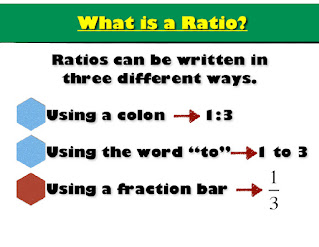How should a grocer mix 4 types of peanuts, worth 54 cents, 72 cents, $1.2,0, and $1.44 respectively per pound, so that the grocer will make a total mixture which is 96 cents per pound?
(A) 8:4:4:7
(B) 24:12:12:50
(C) 4:8:9:4
(D) 16:42:28:10
(E) Cannot be determined
Let's spell out what we know:
The Price in cents of 4 types of peanuts is 54, 72, 120, 144
The ratio of the Prices of 4 types of peanuts is 9 : 12 : 20 : 24 parts
The ratio is taken in order to reduce complexity
Average Price of mixture = 96 cents
Reduce by dividing by a common factor of 6 to get:
New Average Price of mixture = 16 parts
The only way to solve a problem with fewer usable equations than variables is to plug values into the answer choices.
Respective Quantity x Respective Price = Total Price
also Average price x Total Quantity = Total Price
We can therefore set Quantity x Respective Price = Average price x Total Quantity
This is what we will test to see if an answer choice is valid.
Option 1
Ratio of quantity mixed is 8a:4a:4a:7a
Total quantity = 23a parts (8+4+4+7)
(8a*9 + 4a*12 + 4a*20 + 7a*24) = 16*23a
368a = 368a
LHS = RHS
Thus option 1 satisfies the condition
Option 2
Ratio of quantity mixed is 24a:12a:12a:50a or 12a:6a:6a:25a
Total quantity = 49a parts
(12a*9 + 6a*12 + 6a*20 + 25a*24) = 16*49a
900a ≠ 784a
LHS ≠ RHS
Thus option 2 does not satisfy the condition
Option 3
Ratio of quantity mixed is 4a:8a:7a:4a
Total quantity = 23a parts
(4a*9 + 8a*12 + 9a*20 + 4a*24) = 16*23a
408a ≠ 368a
Option 3
Ratio of quantity mixed is 4a:8a:7a:4a
Total quantity = 23a parts
(4a*9 + 8a*12 + 9a*20 + 4a*24) = 16*23a
408a ≠ 368a
LHS ≠ RHS
Thus option 3 does not satisfy the condition
A
A
A Refresher on Ratios and Proportions and How to Solve Them
Let's talk about ratios and proportions. When we talk about the speed of a car or an airplane we measure it in miles per hour. This is called a rate and is a type of ratio. A ratio is a way to compare two quantities by using division as in miles per hour where we compare miles and hours.
A ratio can be written in three different ways and all are read as "the ratio of x to y"
A proportion on the other hand is an equation that says that two ratios are equivalent. For instance, if one package of cookie mix results in 20 cookies then that would be the same as saying that two packages will result in 40 cookies.
A proportion is read as "x is to y as z is to w"
Example
You know that to make 20 pancakes you have to use 2 eggs. How many eggs are needed to make 100 pancakes?
| Eggs | pancakes | |
| Small amount | 2 | 20 |
| Large amount | x | 100 |
If we write the unknown number in the nominator then we can solve this as any other equation
Multiply both sides with 100
If the unknown number is in the denominator we can use another method that involves the cross product. The cross product is the product of the numerator of one of the ratios and the denominator of the second ratio. The cross products of a proportion are always equal if we again use the example with the cookie mix used above
It is said that in a proportion if
If you look at a map it always tells you in one of the corners that 1 inch of the map corresponds to a much bigger distance in reality. This is called scaling. We often use scaling in order to depict various objects. Scaling involves recreating a model of the object and sharing its proportions, but where the size differs. One may scale up (enlarge) or scale down (reduce). For example, the scale of 1:4 represents a fourth. Thus any measurement we see in the model would be 1/4 of the real measurement. If we wish to calculate the inverse, where we have a 20ft high wall and wish to reproduce it in the scale of 1:4, we simply calculate:
In a scale model of 1:X where X is a constant, all measurements become 1/X - of the real measurement. The same mathematics applies when we wish to enlarge. Depicting something in the scale of 2:1 all measurements then become twice as large as in reality. We divide by 2 when we wish to find the actual measurement.
Jeremiah LaBrash is a programmer and CIO for a CCaaS telecom company based in New York, NY. If you have math or verbal questions you’re having difficulty with and would like Jeremiah LaBrash to solve them and parse them into understandable parts, please leave a comment below or mail jr@thelevel11.com

No comments:
Post a Comment